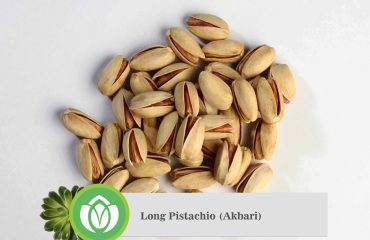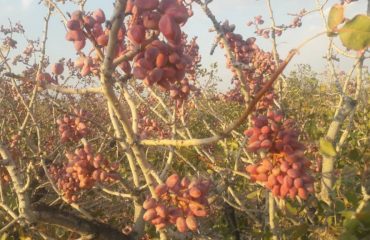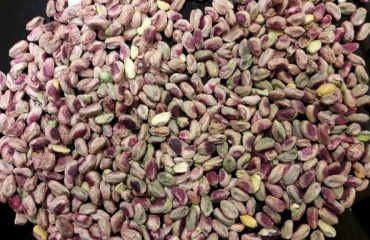Pistachio is one of the most important and stable members of Iranian nuts, whose potassium content is equal to that of orange with this small body, and it is very important due to its nutrients. Kerman province, Rafsanjan city and Sirjan city are the main centers of pistachio production in Iran. Four types of pistachios are produced in Iran: Hazelnut, Koleghoochi, Akbari and Ahmad Aghaei
Properties of pistachios
How to consume pistachios
Pistachios can be eaten both raw and dried. In order to give a better taste to this fruit, it is fried with water and salt to prepare salted pistachios.
The following sources are available in 100 grams of pistachio kernels:
Starch 15 g
2.5 grams of water
20 grams of protein
Fat 54 g
Calcium 130 mg
Phosphorus 500 mg
Iron 7.5 mg
Potassium 950 mg
Vitamin A 230 units
Vitamin B1 0.7 mg
Vitamin B3 1/5 m
Medicinal properties of pistachios
Pistachio consumption is very effective in preventing cardiovascular diseases. It is also useful for calming and regulating heart rate and calming the nerves, and reduces bad cholesterol.
– Pistachio kernel is due to having hematopoietic iron and those who suffer from anemia must eat some pistachios daily.
Eating pistachios strengthens sexual power.
– Strengthens the brain and mind.
– It is useful for calming the heart and calming the nerves.
– It is recommended to consume pistachios to open the liver ducts.
– Pistachio strengthens the stomach.
– It is useful for relieving cough.
Treats normal diarrhea and dysentery.
– Pistachio tree decoction is useful to relieve itching of female genitals.
Decoction of pistachio bark and leaves is useful for relieving anal pain and itching.
Pistachios are recommended for athletes, students, adolescents, especially in adulthood, and for pregnant and lactating women because they contain good nutrients along with vitamins and are high in calories.
If pistachios are consumed for a long time, we can hope for improvements in blood pressure during sleep, vascular response to anxiety and control of heart pressure.
Properties of pistachios
Disadvantages of improper consumption of pistachios
Harms of pistachios
Pistachio kernels are a rich source of beneficial fatty acids, but are not recommended for people with high blood triglycerides, and are not suitable for the stomach due to their poor digestion. Eating too much of it causes body heat and hives and red grains on the skin. Vinegar, sour pomegranate or sour apricot leaves should be used to relieve heat and dryness.
Eating pistachios is harmful for people who suffer from liver failure, gout, diabetes and kidney problems.
Pistachio kernels are hot and dry according to ancient Iranian medicine and are not suitable for hot-tempered people.
Properties of pistachio green skin
– The best medicine is to eliminate bad breath.
– Chewing it heals wounds in the mouth.
– To strengthen the gums, rub it on the gums or chew.
Brewed pistachio green skin eliminates nausea and vomiting.
– Brewed it is useful for diarrhea.
– To relieve hiccups, brew green pistachio skin and drink a cup of it. Properties of white pistachio skin
Properties of white pistachio skin
Pistachio white skin is useful for hemorrhoids and anal protrusion. To treat this disease, you should boil the white skin of pistachio in water and pour it into the pelvis and let the person who has this disease sit in pain for a few minutes. It relieves pain and alleviates the disease.
Properties of pistachios
Therapeutic and nutritional properties of pistachios
Pistachio oil
Pistachio kernel extract is a clear, yellow oil that has nutritional and therapeutic properties.
Pistachio oil is a desirable moisturizer and is absorbed quickly and does not cause stickiness and is a good option for facial and body massage. Its omega-6 fatty acids eliminate the effects of surgical wounds, prevent wrinkles around the eyes and face, and most importantly, make hair clear. Oral consumption of this oil also has a therapeutic aspect and its phosphorus increases intelligence and memory and its folic acid helps the growth and development of the fetal nervous system.




